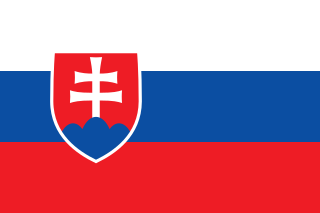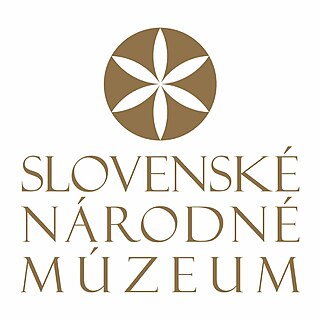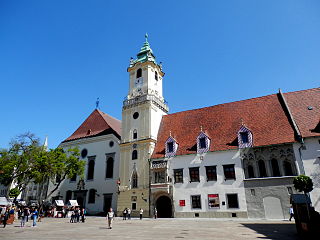
Slovakia, officially the Slovak Republic, is a landlocked country in Central Europe. It is bordered by Poland to the north, Ukraine to the east, Hungary to the south, Austria to the west, and the Czech Republic to the northwest. Slovakia's mostly mountainous territory spans about 49,000 square kilometres (19,000 sq mi), hosting a population exceeding 5.4 million. The capital and largest city is Bratislava, while the second largest city is Košice.

Košice is the largest city in eastern Slovakia. It is situated on the river Hornád at the eastern reaches of the Slovak Ore Mountains, near the border with Hungary. With a population of approximately 230,000, Košice is the second-largest city in Slovakia, after the capital Bratislava.

The Old Town of Bratislava is the historic center and one of the boroughs of Bratislava, in the Bratislava Region of Slovakia. It is coextensive with the smallest Slovak administrative district by area, Bratislava I. It contains the small, but preserved medieval city center, Bratislava Castle and other important landmarks. Bratislava's Old Town is known for its many churches, the Bratislava Riverfront and cultural institutions, it is also the location of most of the foreign states embassies and important Slovak institutions including the National Council of the Slovak Republic; the Summer Archbishop's Palace, seat of the Government of Slovakia; and Grassalkovich Palace, seat of the President of Slovakia.

The Slovak National Museum is the most important institution focusing on scientific research and cultural education in the field of museology in Slovakia. Its beginnings "are connected with the endeavour of the Slovak nation for national emancipation and self-determination".

The Bratislava City Museum is a museum in Bratislava, Slovakia, established in 1868. Its headquarters are located in the Old Town, near the Main Square at the Old Town Hall. The museum is owned by one of the 11 allowance organizations of the City of Bratislava.

Bratislava is the capital city and the cultural and economic centre of Slovakia. It is home to several museums and galleries, including the Slovak National Museum and the Slovak National Gallery.

The Slovak National Gallery is a network of galleries in Slovakia. It has its headquarters in Bratislava.

The Bratislava City Gallery is a gallery located in Bratislava, Slovakia, in the Old Town. It is the second largest Slovak gallery of its kind. The gallery is housed at the Mirbach Palace and Pálffy Palace.
Rudolf Fila was a Slovak painter, educator and author, best known for his artistic reinterpretations of the works of Gustav Klimt.

The culture of Slovakia is influenced by its Catholic culture, its various folk traditions, and its location in Central Europe. Slovakian culture shares certain similarities with the cultural traditions of its neighbouring countries: Poland, Ukraine, Hungary, Austria and Czech Republic.

Bratislava, historically known as Pozsony and Pressburg, is the capital and largest city of the Slovak Republic and the fourth largest of all cities on the River Danube. Officially, the population of the city is about 475,000; however, some sources estimate it to be more than 660,000—approximately 140% of the official figures. Bratislava is in southwestern Slovakia at the foot of the Little Carpathians, occupying both banks of the River Danube and the left bank of the River Morava. Bordering Austria and Hungary, it is the only national capital to border two sovereign states.
Blažej Baláž is a Slovak contemporary artist. His practise as an artist is usually associated with political art, environmental, activist, mail-art and neo-conceptualism. After 1988 he began working with text as art, neo-conceptual and post-conceptual texts.
František Reichentál, also known as Frank/Ferenc, Reichenthal/Reichen-tal, was a Jewish Eastern European modern artist. He is known for paintings depicting his experiences of childhood poverty, captivity as a prisoner of war in Russia, escape from the Nazis, and finally fleeing from the Communists to start over in the United States.
The following is a timeline of the history of the city of Bratislava, Slovakia.
Jana Farmanová is a Slovak contemporary figurative painter who has been called one of the most influential painters of contemporary Slovak and Czech art scene.
Veronika Sramaty, is a Slovak painter. As an artist she is interested in various media, but mostly she is involved with media of painting related to classic concept of historical painting as well as its influence of neo-conceptual tendencies. She is the author of the artistic project The Top Ten.

RONA a.s. is a Slovak drinking glass manufacturer, established in Lednické Rovne, Slovakia, in 1892. The name RONA comes from the former naming of the village ‘‘Lednicz Rone’’. The company manufactures unleaded drinking glasses, known as crystal glass. 96% of production is exported and is available in more than 80 countries worldwide. The yearly production of the company exceeds 60 million pieces (2016). Product segments include households, the gastronomy business, aerospace, and ship catering.
The architecture of Slovakia has a long, rich and diverse history. Besides Roman ruins, Slovakia hosts several Romanesque and Gothic castles and churches, most notably Spiš Castle, which were built at the time of the Kingdom of Hungary. Renaissance architecture was of particular relevance in town hall squares, such as in Bardejov and Levoča. Affluent architecture in the following centuries made use of Baroque, Rococo and historicist styles, while vernacular architecture in the countryside developed a specific style of wooden houses and wooden churches. In the 20th century, Slovakia knew Art Nouveau and modernist architecture, including socialist modernism, and finally contemporary architecture.
Juraj Bartusz is a Slovak sculptor known for his time-space statues and for his non-conventional approach to statue and object from the mid-1960s until the present. "In 1972 he started to work with the computer, cooperating with the computer programmer Vladimír Haltenberger. Computer generated curves were used as a template for manufacturing rotational, human-like sculptures." "The broad spectrum of author’s work includes constructivist sculpture, action and conceptual art, site-specific art, as well as installation. In the eighties he started working with the time factor and began to create time-limited paintings and drawings, and model his works by forceful hits, e. g. throwing bricks to solidifying plaster or slamming the material with planks or rubber straps, referring to the energy of the author’s gesture."
Viktória Cvengrošová was a Slovak architect.










